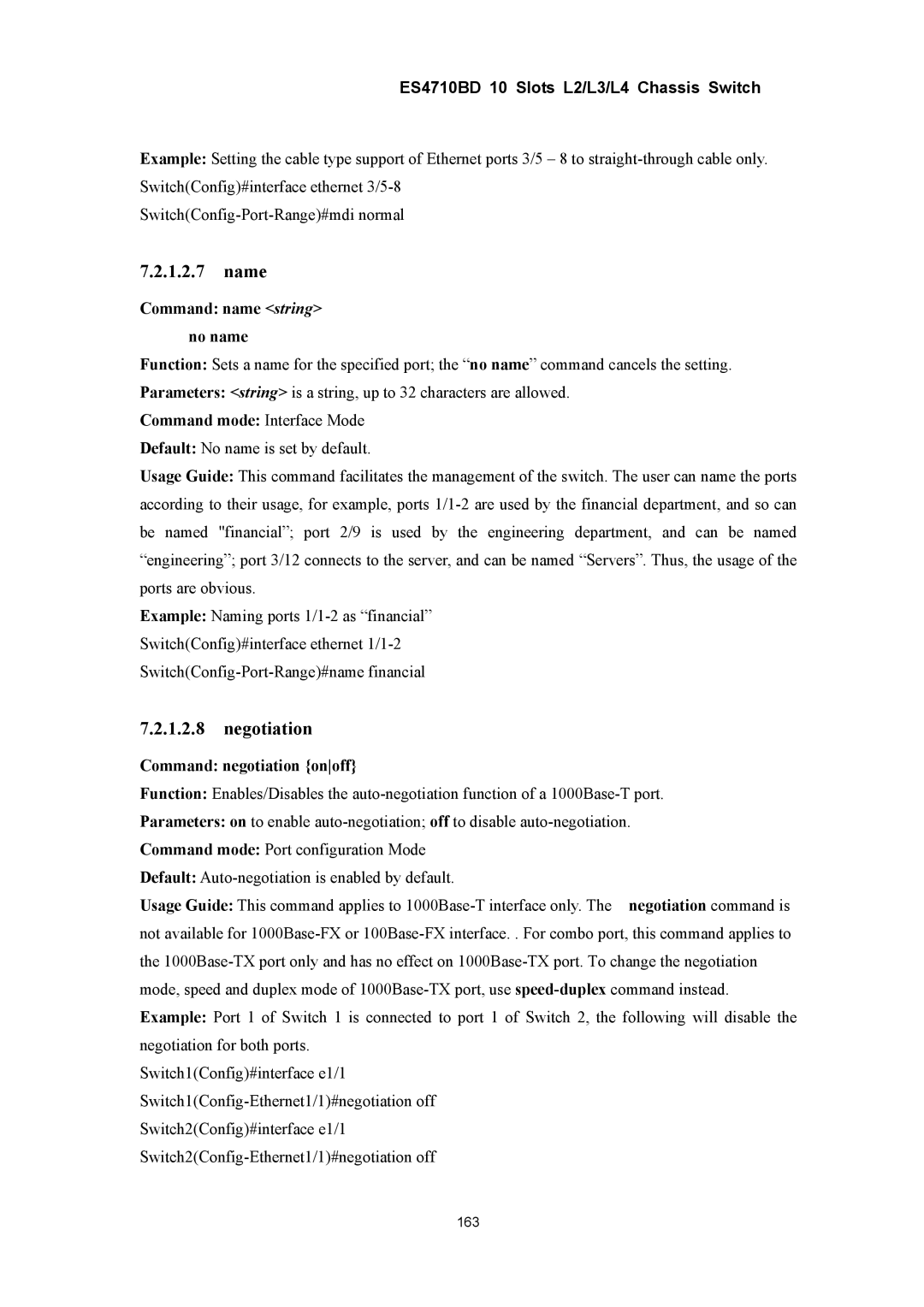ES4710BD 10 Slots L2/L3/L4 Chassis Switch
Example: Setting the cable type support of Ethernet ports 3/5 – 8 to
7.2.1.2.7name
Command: name <string> no name
Function: Sets a name for the specified port; the “no name” command cancels the setting.
Parameters: <string> is a string, up to 32 characters are allowed.
Command mode: Interface Mode
Default: No name is set by default.
Usage Guide: This command facilitates the management of the switch. The user can name the ports according to their usage, for example, ports
Example: Naming ports
7.2.1.2.8negotiation
Command: negotiation {onoff}
Function: Enables/Disables the
Parameters: on to enable
Command mode: Port configuration Mode
Default:
Usage Guide: This command applies to
Switch1(Config)#interface e1/1
163
